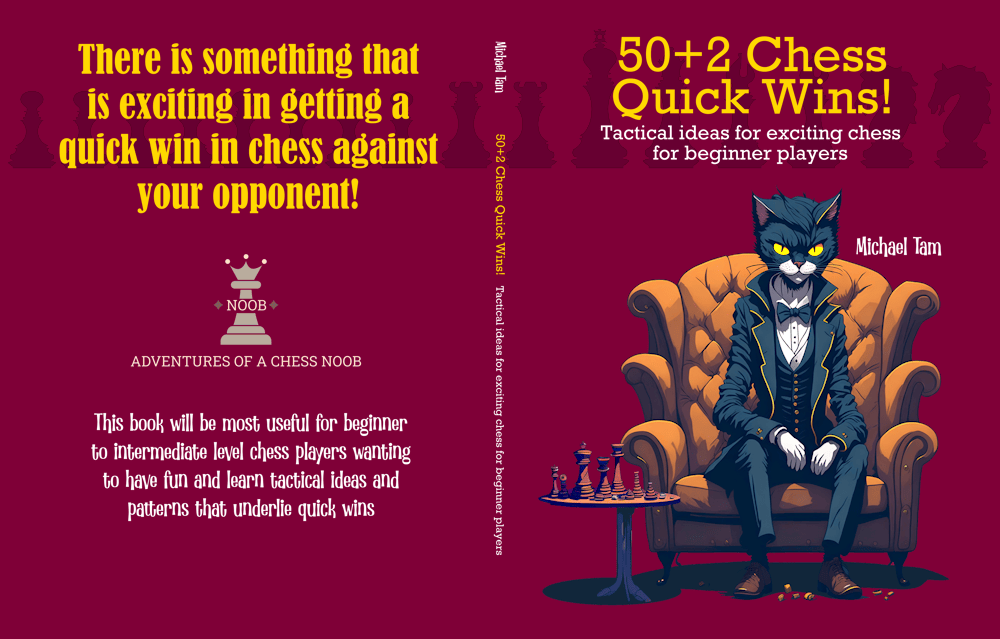
Destroy the Fried Liver Attack with the Ponziani-Steinitz Gambit
#ItalianGame #TwoKnightsDefense #FriedLiverAttack #PonzianiSteinitzGambit
The Fried Liver Attack is one of the most aggressive early attacks by White in the Italian Game. It becomes available for White when Black plays the Two Knights Defense with an immediate aggressive early knight advance on move 4 (1. e4 e5 2. Nf3 Nc6 3. Bc4 Nf6 4. Ng5). There are quite a few internet chess articles and YouTube videos on how to play the Fried Liver Attack and I faced it frequently with the Black at the beginner-intermediate level. It should be noted, this opening is actually pretty good for White. Objective evaluation by Stockfish is dead even [0.00] and the Lichess community database of lower-rated blitz and rapid games gives a definite win advantage to White (52%) vs Black (45%).
In fact, to largely avoid the Fried Liver Attack when I was sub-1000 ELO, I didn’t play the Two Knights Defense (3… Nf6) against the Italian at all, but rather, developed my bishop to steer the game into a Giuoco Piano (3… Bc5)!
In the Fried Liver Attack, the main line and most common response is to play d5 (4… d5). In fact, 80% of games went down this line in the Lichess database, which means that White playing the Fried Liver is likely to be well prepared. I tended to have poor success. It felt difficult to play, and I didn’t like that the opponent had the initiative and I had to defend. The continuation for White after d5 is almost certainly the pawn capture (5. exd5), an obvious and only good move. For Black, the Polerio Defense afterwards is best, moving the knight to the edge of the board with an immediate attack on the light square bishop on c4 (5… Na5).
Online resources describe a risky alternative to the Fried Liver, the Traxler Counterattack (4… Bc5). This is the second most common response occurring about 13% of Fried Liver games. In this line, after the opponent captures the f7 pawn with the apparent fork of the queen and rook (5. Nxf7), Black responds with a daring bishop sacrifice with check (5… Bxf2+). There is a lot of theory in the Traxler. However, as it’s so well discussed in the context of the Fried Liver, many Fried Liver players will be familiar with the Traxler and will avoid the early trap of capturing the seemingly hanging bishop with their king (6. Kxf2) and simply slide their king out of the way (6. Kf1). I’ve had poor success with the Traxler as it gets rather complicated to play as Black, and a single mistake can result in a catastrophic advantage to White.
At the beginner-intermediate level, the most successful move for Black after White initiates the beginning of the Fried Liver Attack is the Ponziani-Steinitz Gambit (4… Nxe4). This is seen in only 4% of Fried Liver games is likely unexpected by the lesser prepared Fried Liver player. Moreover, it doesn’t seem to be described often in articles on the Fried Liver. It should be noted that this gambit is risky, and refuted at masters level, so buyer beware. However, at my level, Black has a win advantage (55%) over White (42%). Moreover, if White continues with the Fried Liver (5. Nxf7), which is what happens the most frequently, then Black has basically won with the stunning wayward queen move (5… Qh4) – the win advantage is massive at Black (70%) vs White (27%).
On move 6, White has basically one final chance to extricate themselves for doom as technically, the objective evaluation isn’t too bad [-0.67]. However, in actual games, the three most common responses by White, representing 96% of moves from this position, are all bad! Castles (6. O-O) is a mistake [-2.16], queen out (6. Qf3) is a severe blunder [-10.4] and attacking the queen with the g-pawn (6. g3) is a bad mistake [-3.83]. White only found the best and rather obscure move (6. Qe2) in 3% of games.
The great thing with the Ponziani-Steinitz Gambit is that we’ve turned the tables on White! We now have the initiative, White must scramble to find the best defensive moves, and the position is relatively easy to play for Black!
Game on chess.com: https://www.chess.com/game/live/53839834373



